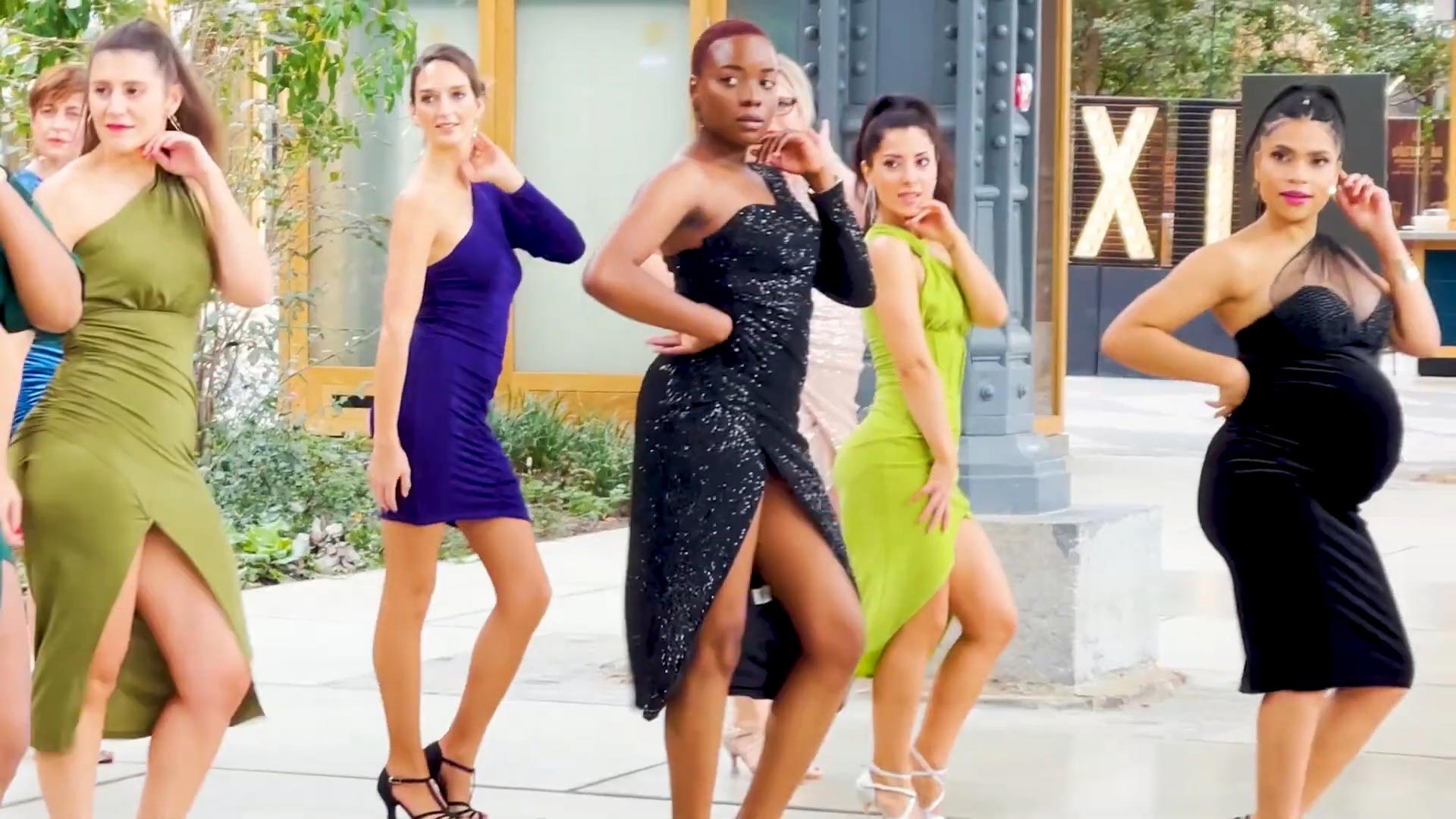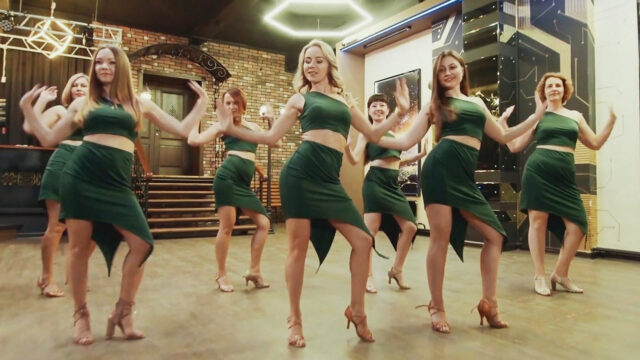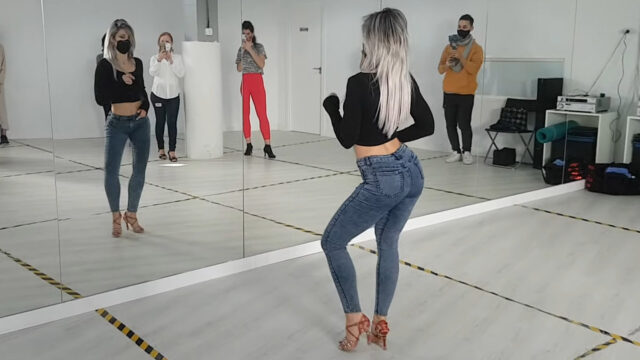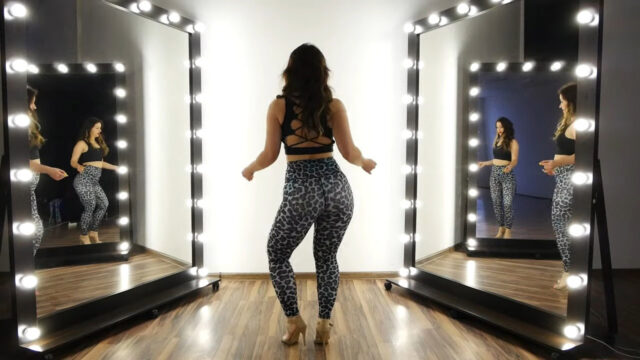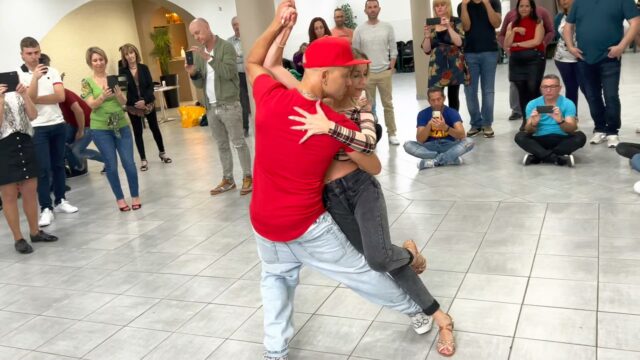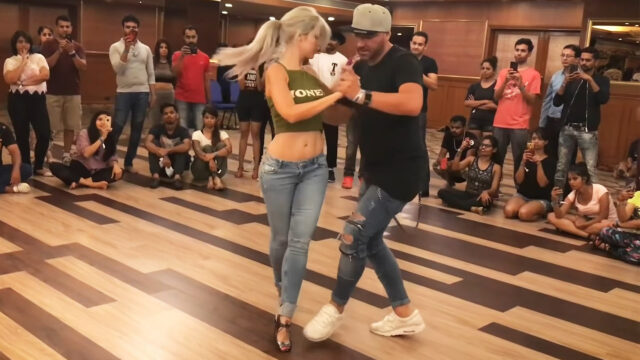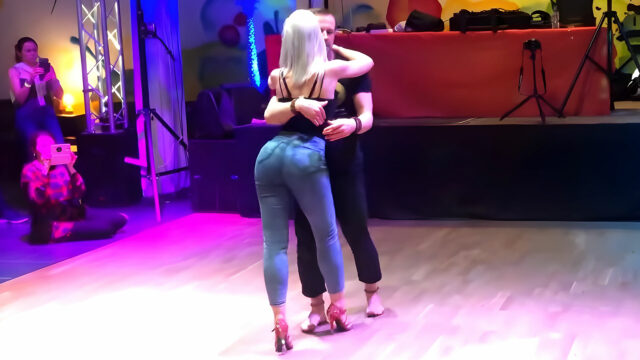As a kizombera, it’s important to showcase your own unique style and flair. It’s true for any dance style and for any gender in fact, but today we’ll focus more on lady styling in Kizomba in particular. Women styling classes in Kizomba are often called “Ginga”. If you’re new to this whole concept, here is a colorful video of Sarah Amaro and her students performing ginga choreography to “Chocolate” by Carina Santos:
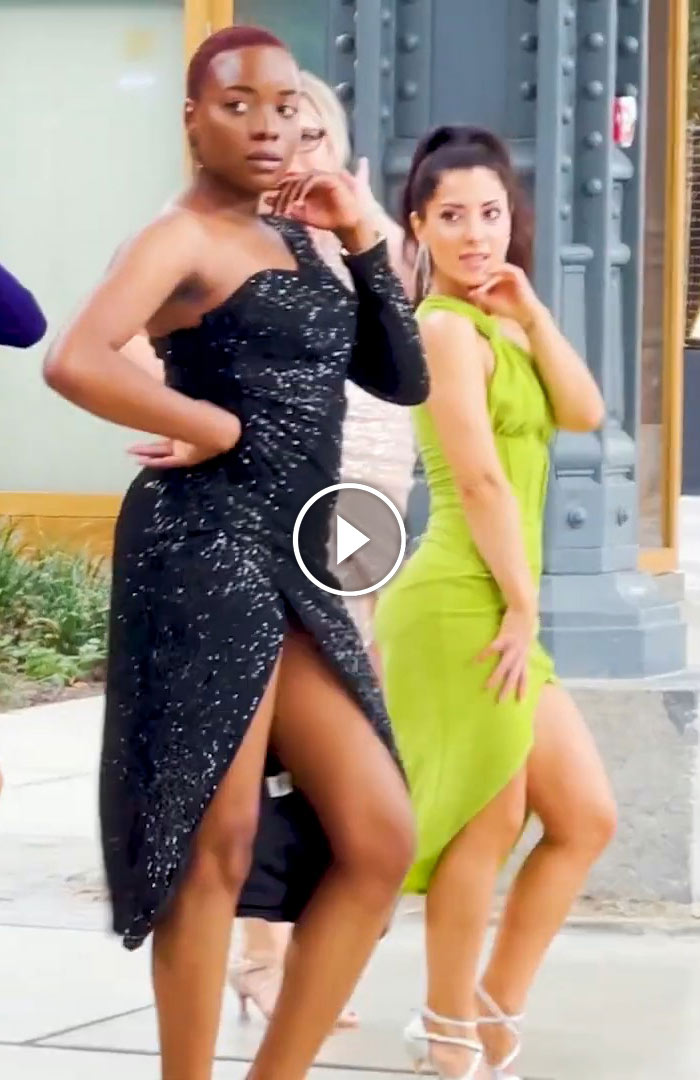
When we talk about ginga in kizomba, we mean the movements you make with your body between the dance steps. Ginga is that swaying and swinging motion that drives the dance. It’s what makes the dance smooth versus sharp. To properly dance kizomba, ginga is key.
- Urban Kiz Lady Styling Choreography by Natalia Ulanova
- At what age is it OK to enroll girls in a dance promoting that level of sensuality?
- Isolate Like a Pro: Kizomba Hip Control Secrets Revealed
You can do the right steps but without connecting them through ginga’s flow, you aren’t really dancing kizomba. Anyone can do steps. Dancing those steps, though – that’s different. That’s ginga bringing the musicality alive through how you ride the rhythm with your hips, knees, arms and shoulders.
Developing such feminine flair adds to your confidence and allows you to stand out on the dance floor. There are a few key things you can focus on to help craft your distinctive dancer persona.
- Embrace who you are
The foundation of great style is a strong sense of self. Don’t try to emulate other dancers. Really know yourself – your personality, body type, strengths and weaknesses – and translate that authentically into your dancing. Play up your best assets with confidence. If you’re shy or energetic or sensual, let your inner spirit energize your moves. - Tell a story
Good Kizomba dancing is like storytelling; share your tale through fluid movements. Engage with your partner and the music to direct an intimate narrative using the instrument of your body. Facial expressions also add flair and help the audience connect emotionally. Lose yourself in the tale – your distinctive presence will emerge naturally. - Explore your unique groove
Every dancer has a personal cadence informed by their heritage, upbringing and culture. Tap into this groove with offbeat rhythms, accents and isolations that come naturally. Fuse diverse movement vocabularies like Latin motion or African steps until your body pulses to its own inner music. This flavor is you – own it, amplify it! - Take risks and dare to be different
Mimicking others leads to generic moves. Challenge yourself to test uncharted waters, to boldly attempt what you fear. Innovative body articulations, unexpected rhythms, even small details like a flick of the wrist or curve of a hip make a statement. Not every experiment will work, but this willingness to risk for new forms of expression will uncover one-of-a-kind punctuation. - Break the “rules”
So-called rules of dance can constrict individuality. Branch out beyond the basics you’ve been taught. How can you re-imagine or deconstruct elements? Isolate body parts, shift accents, change levels and facings. Improvising to music you don’t know well loosens ingrained habits. Purposefully altering fundamentals awakens refreshing possibilities. - Customize and embellish existing vocabulary
The building blocks of Kizomba already offer a rich dynamic range. Make these staples your own with personalized embellishment and interpretation. Punctuate Your musicality and emphasis on accents. Bring individual inflection to trademark moves – a body roll, hip circles, foot work. Add an unexpected flourish – a shimmy, body wave, shoulder bounce. This personal punctuation elevates you beyond the masses. - Focus on musical conversation, not mechanics
Dance is communication, a back-and-forth dialogue between partners. Overthinking steps shortchanges musical exchange. Instead listen deeply to percussive clues, vocals and vibes. Access moves from this emotional space. Staying mentally immersed in songs this way will pull distinctive dynamics from you. Some dancers even pick a song to dedicate their performance to, embodying its unique personality. - Tell your own stories through free-styling
Choreography set to songs tells someone else’s tale. Improvise movements in the moment to organically build narrative arcs, crescendos and highlights true to You. Let impulses guide you as the music builds in intensity. Moments of tension followed by release, suspended time, changes in tempo all prompt you to respond authentically. Because this unfiltered expression springs spontaneously from your distinctive lens on the world. - Have an opinion and clear perspective
Generic dancing lacks a sharp point of view. But self-awareness of your tastes help curate creative choices that form your distinctive “stamp”. What visual aesthetics light you up? Do you gravitate toward cultural influences like Afro-Latin diaspora? Favorite musical elements like sax riffs or tribal percussion? Areas to highlight like footwork or floorwork? Finding throughlines in preferences spotlights signature elements central to your vibe.
In conclusion, developing personal flair requires leaning into your unique spirit and fearless self-expression. Explore movements aligned with your truest nature. Customize signature stylizations. Reimagine fundamentals through your lens. Improvise to let your distinctive rhythm shine. And above all, stay immersed in the music, letting songs elicit your utterly original dance vocabulary. Own all that makes you wonderfully you. This is the pathway to sensational style.
If you enjoyed this article, feel free share it with your friends and let them know what you think about it. Also, consider checking out our most recent posts and stay in touch. Thank you!
